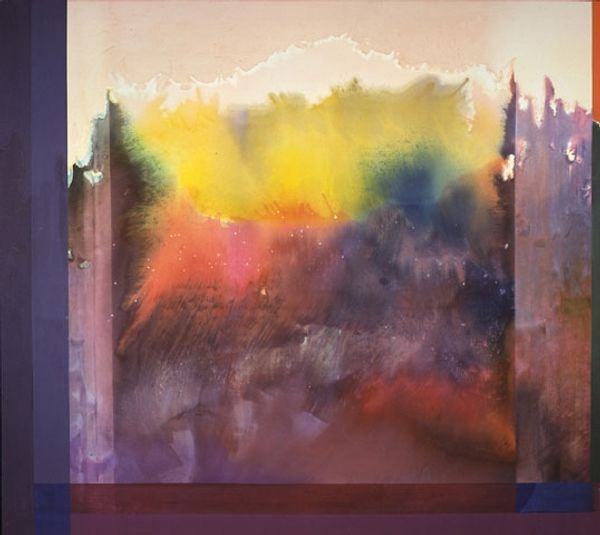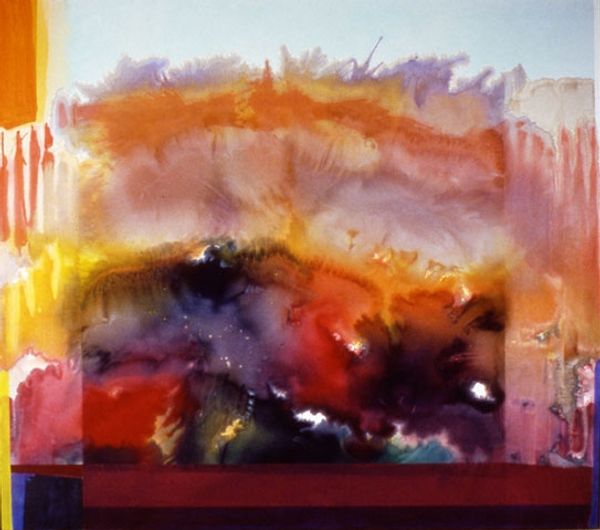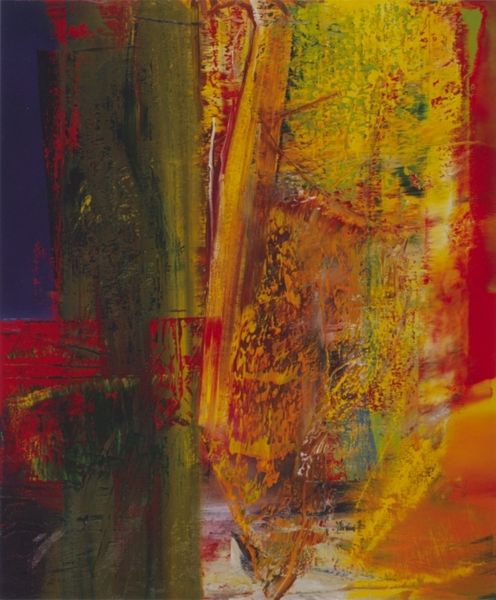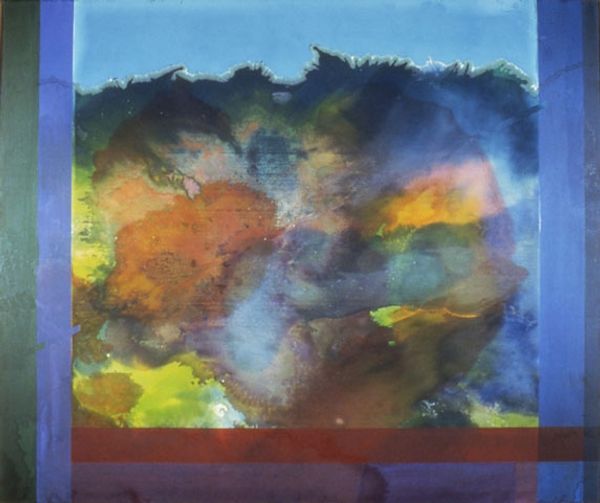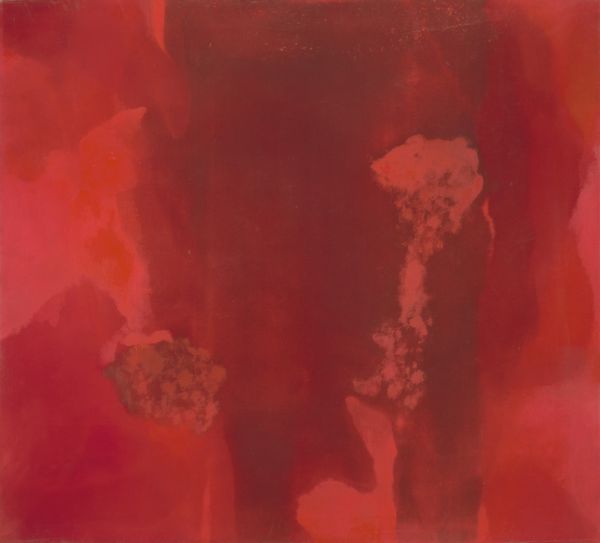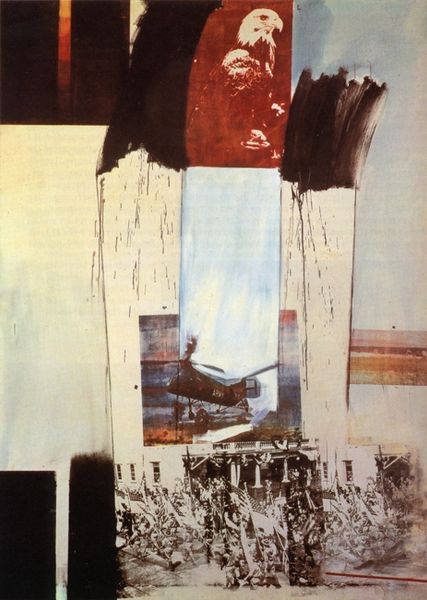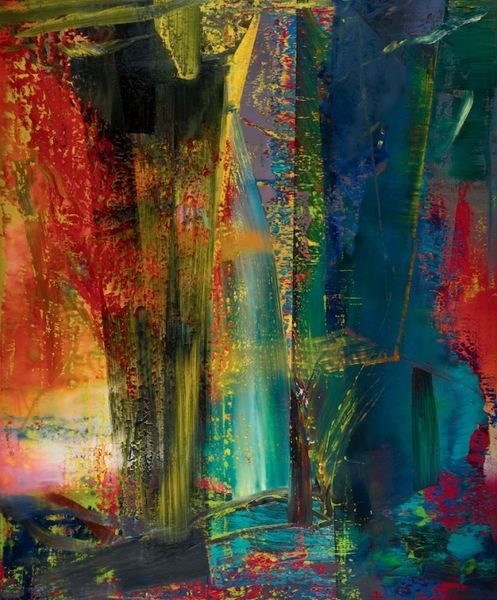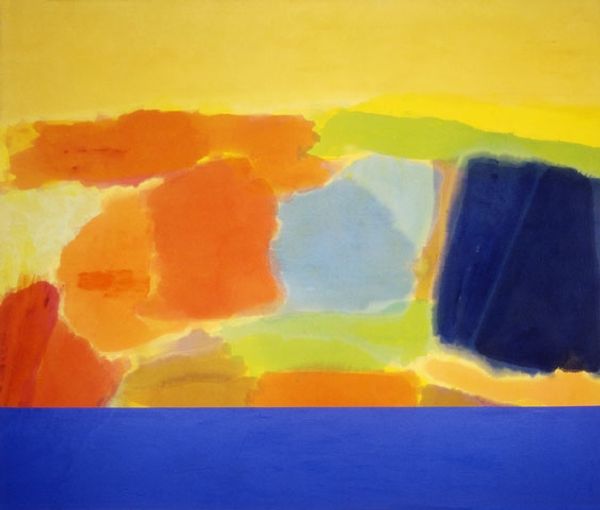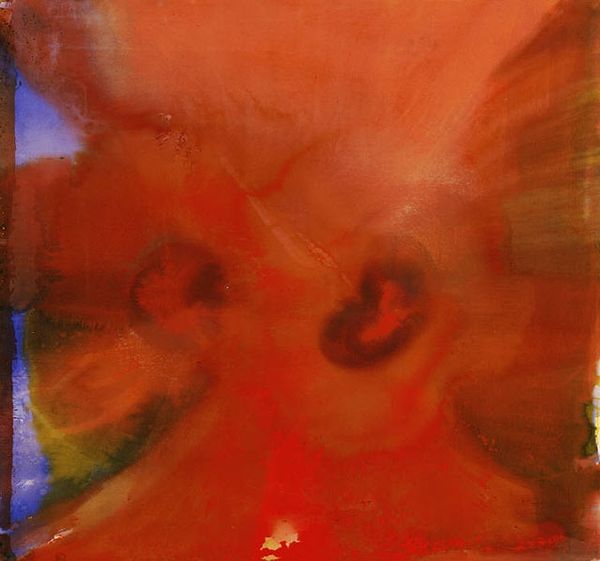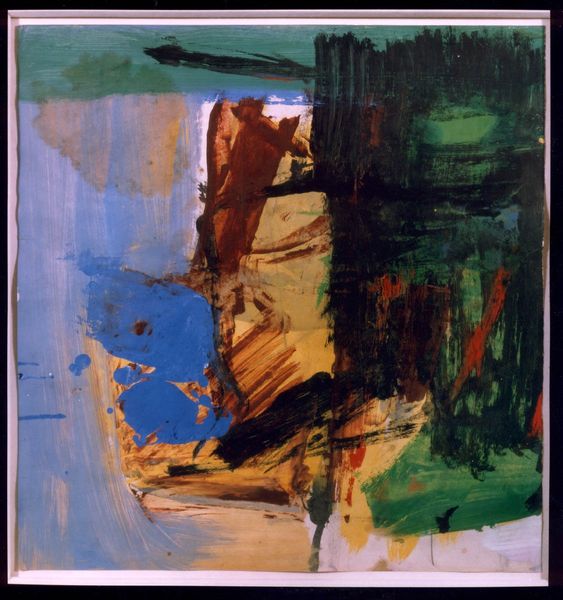
Copyright: Ronnie Landfield,Fair Use
Curator: Before us hangs "Sixteenth Century," a 1985 painting by Ronnie Landfield, rendered with both acrylic and watercolor. The blend of mediums contributes to its distinct character. What are your initial thoughts? Editor: Immediately, I'm struck by its atmospheric quality, almost dreamlike. The colors seem to bleed into each other, creating a sense of depth, like peering into another world. Does this effect stem from Landfield's adoption of both acrylic and watercolor techniques here? Curator: Precisely. The composition juxtaposes geometric blocks of solid color along its perimeter with the amorphous, cloudy central field, made using thin washes of watercolor with some delicate passages rendered in acrylic. Note how these rigid bands confine a space of pure coloristic sensation. Editor: It's like the solid blocks frame a vibrant history, or a volatile political era perhaps. I see suggestions of Rothko, in its bands of color, but more active. Did the "Sixteenth Century" allude to an actual historical period, its conflicts, explorations, or maybe scientific shifts? Curator: While titled "Sixteenth Century," the artwork gestures more toward pure formalism than historical narrative. The title, in effect, is a type of framing device—prompting us to think more, perhaps, about notions of "classicism" versus what was happening at the time of this picture's creation, amid debates in art history and criticism. Editor: I can see that. The composition really is compelling, the push and pull between chaos and order, particularly within the context of Abstract Expressionism. Are there overt references or allusions within the abstract forms? Curator: What’s potent, is the dialogue created through Landfield's contrasting of painterly freedom against structure. The color choices, and the interplay between the two mediums, underscore an interest in purely visual phenomena over easily extracted symbolism. Editor: Yes, I recognize that more fully now. Thank you; thinking about color, texture, and form has enhanced my appreciation. Curator: Absolutely. By focusing on the artistic elements and less on external meanings, one arrives at a more informed interpretation of Abstract Expressionism and its place in twentieth century art.
Comments
No comments
Be the first to comment and join the conversation on the ultimate creative platform.
